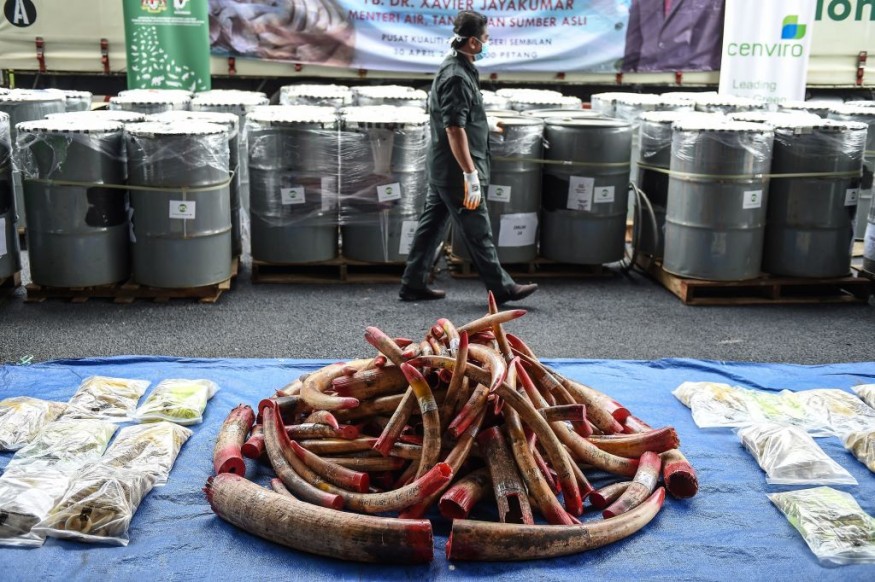The genetic links across shipments that have recently been uncovered reveal an even higher degree of organization among the networks of elephant ivory smuggling compared to previously known.
A team of researchers led by the University of Washington scientists and special agents with the United States Department of Homeland Security has used genetic testing of ivory shipments apprehended by law enforcement "to expose the international criminal networks behind ivory trafficking out Africa," a EurekAlert! report said.
In a new study, the researchers incorporated results from DNA testing of over 4,000 African elephant tusks from 49 different ivory confiscations made in 12 African nations over a period of 17 years.
Uncovering the connections among distinct ivory seizures carried out at African and Asian posts, sometimes with thousands-of-miles distance, will likely enhance evidence against the criminals arrested because of elephant stealing or ivory smuggling.

Devastating the 2 Elephant Species in Africa
According to Samuel Wasser, lead author of the study published in Nature Human Behavior, such exposure will also strengthen the actions of the responsible transnational criminal organization.
Wasser, a professor of biology at UW and the director of the Center for Environmental Forensic Science whose group devised genetic tools behind this project, added, "these approaches are showing" a handful of networks are behind a majority of smuggled ivory, and that the connections between such networks are deeper compared to even their past research revealed.
The illegal ivory trade, together with climate change, habitat loss, and many other factors, has devastated the two elephant species in Africa.
Even though ivory confiscations by authorities come from elephants that have already been slaughtered, the tusks can offer valuable information by revealing the shipment activities, poaching, and the traffickers' connectivity.
Matching a Task to Its Pair
Previous research by Wasser and his collaborators, which was published in 2018 in the Science Advances journal, identified tusks from the same elephants that were separated and smuggled in different shipments before being seized by law enforcement.
Finding both tusks from the same individual associated such seizures with the same trafficking networks. More so, such initiatives specified that, between 2011 and 2014, cartels tended to smuggle ivory out of three ports in Africa, specifically Entebbe, Uganda; Mombasa, Kenya; and Lome Togo.
In this new research, Wasser's team expanded their analysis of the DNA and the testing regimen to identify the elephants' tusks that were close relatives such as total and half-siblings, parents, and offspring. The lead author explained that adding close relatives is expanding the scope of the initiative.
Wasser explained if one is trying to match a tusk to its pair, he is less likely to succeed with the match. However, identifying close relatives will be a much more common event and connect more ivory seizures to the same smuggling networks.
The researchers tested the said expanded protocol on more than 4,300 tusks from both foreign elephants identified as "Loxodonta cyclotis," which is described in the Animal Corner site and savannah elephant known as "Loxodonta Africana," from 49 distinct large shipments with 111 metric tons of ivory in all, all apprehended from 2002 to 2019.
Results revealed that most shipments could be connected based on matching tusks either from the same elephant or from close relatives.
Related information about elephant ivory smuggling is shown on ShanghaiEye's YouTube video below:
Check out more news and information on Elephant in Science Times.












